Nothing soothes the soul like a bowl of bún sườn dọc mùng or Vietnamese pork ribs and elephant ear stalk noodle soup! This dish is a delicate blend of succulent pork ribs and uniquely textured elephant ear stalks, all mingling in a soothing broth and soft noodles.
It is a treasure trove of flavor, texture, and aroma, truly epitomizing the richness of Vietnamese cuisine. I invite you to check out today’s recipe and learn how to make this exquisite Vietnamese delicacy!
What Is Bún Sườn Dọc Mùng?
Known as comfort food, bùn sườn dọc mùng is enjoyed all year round in Hanoi. The dish is most commonly eaten during the daytime, particularly for breakfast or lunch, at humble street-side stalls. People also cook it at home for dinner when families gather after a busy day.
Dọc mùng or elephant ear stalks are derived from the taro plant. This plant is cherished for its large, broad leaves that, as you may guess, look a lot like an elephant’s ear, hence the name. However, in this recipe, it’s not the leaves that are used but rather the stalks.
The stalks have a distinct texture that is crunchy yet tender, with a mild, slightly sweet taste. In this Hanoi noodle soup, these prepared stalks are added to the broth just before serving to retain their crunch.
This dish may not require intricate culinary skills, but it does demand attention to details, especially with the main components: broth, elephant ear stalks, and pork ribs. When done right, these ingredients are all perfectly balanced in a bowl of heartwarming soup.
This is a dish that takes me to the vibrant and charming streets of Hanoi, and I believe that bún sườn dọc mùng will have the same effect on you!
Which Are Cooking Tools for Making Bún Sườn Dọc Mùng?
Below are what kitchen tools that you need to prepare to make this delight.
Additional Optional Tools May Include
Bún Sườn Dọc Mùng’s Ingredient List
Check below components and find them in the market. Some could be found in Vietnamese stores.
Ingredients for the Soup
Ingredients for Serving
Spices for Marinating the Ribs
Spices for the Soup
Steps to Make Bún Sườn Dọc Mùng
It’s time to impress others with this Hanoi-style pork ribs and elephant ear stalk noodle soup and its step-by-step instructions.
Step 1: Marinate The Pork Ribs
First, quickly blanch the pork ribs with some salt for a minute or two. After that, rinse the ribs thoroughly to reduce unwanted residues and lessen the strong aroma.
Next, mix the pork ribs with pepper, soup powder, salt, fish sauce, brown sugar, and half of the minced shallots and garlic. Leave this mixture to marinate for 30 minutes, letting the flavors permeate the ribs.
Step 2: Prepare The Vegetables And Herbs
While the ribs marinate, roast a whole onion, shallot, and a piece of ginger in the oven at 400 degrees F for about 15 minutes. Then, peel off the charred outer layers to ensure a clear broth later.
Next, peel the elephant ear stalk and cut it into thin slices. Slice the tomatoes into wedges as well.
Soak the mushrooms in warm water for about 20 minutes to soften them, then chop them finely.
Chop up culantro, cilantro, and scallions, saving the roots of the scallions and cilantro for the soup later. Mince half an onion, with the other half sliced thinly for serving later.
Rinse the sour tamarind well and soak it in water to soften.
Step 3: Cook The Pork Ribs
Add some olive oil to a pot and sauté the remaining minced shallots and garlic until they’re fragrant. Add the marinated pork ribs to the pot and stir-fry them for 2 to 3 minutes to sear them.
Pour 3.5 quarts of water into the pot and add in the roasted vegetables, radish, and the saved herb roots. Bring the mixture to a boil and then simmer for an hour over medium-low heat until the pork ribs become tender.
Step 4: Prepare The Meatballs
While the ribs are simmering, combine the ground pork with wood ear mushrooms, shiitake mushrooms, and the minced onion. For a uniform mix, it’s best to use food prep gloves. Don’t worry about adding extra spices — the ground pork is already seasoned!
After the ribs have been simmering for an hour, they should be soft and tender. Now’s the time to remove the onion, the roots of the scallions and cilantro from the broth.
Next, using a teaspoon or a small spoon, scoop up portions of your pork mixture and drop them into the simmering broth. Continue this process until you’ve used all your mixture. Let the broth cook for an additional 15 minutes over low heat.
Step 5: Cook The Tomatoes
In a separate pan, heat some olive oil and stir-fry the tomatoes briefly. Mash the soaked sour tamarind until it dissolves into the water, and then pour it into the pan with the tomatoes. After 1 or 2 minutes, add the tomato and tamarind mix to the soup.
Sprinkle in 3 teaspoons of salt, 3 teaspoons of soup powder, and 2 tablespoons of rock sugar. At this point, you can adjust the seasoning to suit your taste! Let the soup cook for an additional 2-3 minutes, then turn off the heat.
Step 6: Cook The Elephant Ear Stalk And Blanch The Noodles
Blanch the vermicelli noodles in boiling water for about 30-45 seconds.
Next, boil the elephant ear stalk for 3-4 minutes, then quickly transfer it into an iced bath. This helps the stalk retain its attractive green color and its crunch. Wear food prep gloves and squeeze out any excess water from the stalk.
Step 7: Assemble The Dish
Lastly, assemble the dish by placing a layer of vermicelli noodles in each serving bowl. Then, add the pork ribs, meatballs, some tomato slices, and elephant ear stalk slices on top.
Pour the broth into the bowl until it covers the noodles. Then, sprinkle some scallions, cilantro, culantro, fried shallots, and a dash of ground pepper over the bowl of noodles.
You can add some chili sauce, sate sauce, lime wedges, or chili pepper to boost the flavor.
Tips for the Best Bún Sườn Dọc Mùng
How to Store Bún Sườn Dọc Mùng
To store your noodle soup, the first step is to separate the ingredients. Store the broth, noodles, meat, and vegetables in individual airtight containers. Remember, for safety and to prevent bacterial growth. It’s important to cool the soup quickly before storing it.
If you’re planning to consume the soup within a few days, refrigeration is suitable. You can keep the noodle soup for up to four days in a fridge.
If you’re preparing it for longer storage, freezing is a better option. The broth and meat can be frozen and kept for up to three months. However, it’s best to consume the noodles and vegetables fresh, as freezing can alter their texture.
When you’re ready to enjoy the soup again, heat the broth and meat on the stove until they’re hot. If necessary, you can blanch the noodles in boiling water.
Then, assemble the dish by combining the noodles, meat, and vegetables in a bowl and pouring the hot broth over the top.
A More Decadent Variation You Should Try
To add decadence to your Bun Suon Doc Mung, try incorporating a pig trotter. Rich in collagen, pig trotters enhance the soup with a deep, meaty flavor and luxurious texture.
Prepare the pig trotter by blanching it in salted water to remove impurities. Add it to the broth with the ribs, noting that trotters need longer cooking time to become tender. Start simmering the trotter before adding the ribs.
As it cooks, the trotter releases collagen, giving the broth a rich, silky texture. The meat becomes tender and melt-in-your-mouth, adding an extra layer of flavor and texture to the soup.
FAQs
Bring A Taste Of Hanoi with Bún Sườn Dọc Mùng
Isn’t it wonderful how you can put simple ingredients together and come create such a beautifully complex dish as bùn sườn dọc mùng? Please let me hear your feedback on this recipe. Have you tried it before, or is it your first time?
Please share your experiences and any tweaks you might have added in the comments below. If you found this recipe helpful, do me a favor and hit that like button. Better yet, share this Vietnamese dish with your friends and family.
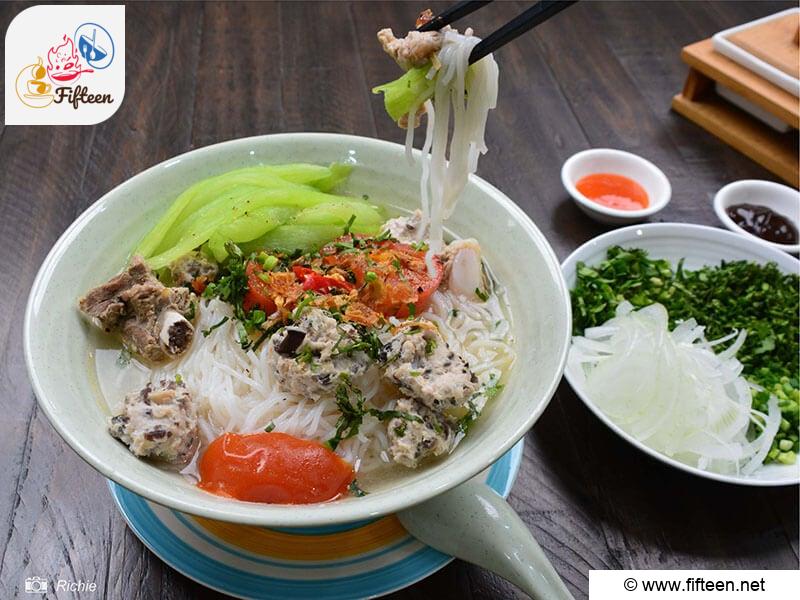
Bún Sườn Dọc Mùng Recipe (Vietnamese Pork Ribs And Elephant Ear Stalk Noodle Soup)
Equipment
- Pot
- Ladle
- Mixing Bowl
- Pan
- Tongs
- Glove
Ingredients
- 2.2 pounds pork ribs
- 1 whole roasted onion
- 1 whole roasted shallot
- 1 roasted ginger root
- Cilantro and scallion root
- 1 whole daikon radish
- 0.7 ounces of minced shallots
- 0.7 ounces of garlic
- 5.3 ounces pork paste
- 0.35 ounces dried shiitake mushrooms
- 0.18 ounces dried wood ear mushrooms
- 0.5 onion, minced
- 12.5 ounces of elephant ear stalk
- 10.6 ounces tomatoes
- 0.53 ounces sour tamarind
- Olive oil
For the pork marinade
- 1 teaspoon black pepper
- 1 teaspoon soup powder
- 1 teaspoon salt
- 1 tablespoon fish sauce
- 0.5 teaspoons brown sugar
For the soup seasoning
- 3 teaspoons salt
- 3 teaspoons soup powder
- 2 tablespoons rock sugar
For garnishing and serving
- 0.5 onion, sliced
- Fried shallots
- Finely chopped cilantro, culantro, and scallions
- 1.1 pounds vermicelli noodles
- Lime wedges, or chili pepper
Instructions
- Quickly blanch the pork ribs with some salt for a minute or two.After that, rinse the ribs thoroughly to reduce unwanted residues and lessen the strong aroma.
- Mix the pork ribs with pepper, soup powder, salt, fish sauce, brown sugar, and half of the minced shallots and garlic.Leave this mixture to marinate for 30 minutes, letting the flavors permeate the ribs.
- While the ribs marinate, roast a whole onion, shallot, and a piece of ginger in the oven at 400°F for about 15 minutes.Peel off the charred outer layers to ensure a clear broth later.
- Next, peel the elephant ear stalk and cut it into thin slices. Slice the tomatoes into wedges as well.Soak the mushrooms in warm water for about 20 minutes to soften them, then chop them finely.
- Chop up culantro, cilantro, and scallions, saving the roots of the scallions and cilantro for the soup later.Mince half an onion, with the other half sliced thinly for serving later.Rinse the sour tamarind well and soak it in water to soften.
- Add some olive oil to a pot and sauté the remaining minced shallots and garlic until they're fragrant.Add the marinated pork ribs to the pot and stir-fry them for 2 to 3 minutes to sear them.Pour 3.5 quarts of water into the pot and add in the roasted vegetables, radishes, and saved herb roots.
- Bring the mixture to a boil and then simmer for an hour over medium-low heat until the pork ribs become tender.
- While the ribs are simmering, combine the ground pork with wood ear mushrooms, shiitake mushrooms, and minced onion.
- After the ribs have been simmering for an hour, they should be soft and tender.Remove the onion, the roots of the scallions, and the cilantro from the broth.Using a teaspoon or a small spoon, scoop up portions of your pork mixture and drop them into the simmering broth. Continue this process until you've used all your mixture.Let the broth cook for an additional 15 minutes over low heat.
- In a separate pan, heat some olive oil and stir-fry the tomatoes briefly.Mash the soaked sour tamarind until it dissolves into the water, and then pour it into the pan with the tomatoes.After 1 or 2 minutes, add the tomato and tamarind mix to the soup.
- Sprinkle in salt, soup powder, and rock sugar.Let the soup cook for an additional 2-3 minutes, then turn off the heat.Blanch the vermicelli noodles in boiling water for about 30-45 seconds.
- Boil the elephant ear stalk for 3-4 minutes, then quickly transfer it into an iced bath.Wear food prep gloves and squeeze out any excess water from the stalk.
- Lastly, assemble the dish by placing a layer of vermicelli noodles, pork ribs, meatballs, tomatoes, and elephant ear stalk slices on top.Pour the broth into the bowl until it covers the noodles. Sprinkle some scallions, cilantro, culantro, fried shallots, and a dash of ground pepper over the bowl of noodles.Enjoy!
Video
Notes
- The total time is based on 5 servings.
- While simmering the ribs, make sure to skim off any foam from the top and refrain from covering the pot to keep the broth clear.
- Note that you may want to boil the elephant ear stalk more thoroughly if you are prone to mouth irritation.
- Also, when squeezing out the water, apply just enough pressure to prevent the stalk from getting mushy.
- To enhance the flavors, try to marinate the pork ribs for a longer period of time. Overnight marination, if possible, allows the flavors to penetrate deeply into the meat.
- Remember to adjust the seasonings according to your taste before serving. Everyone has a unique taste preference, so feel free to tweak the soup to your liking.


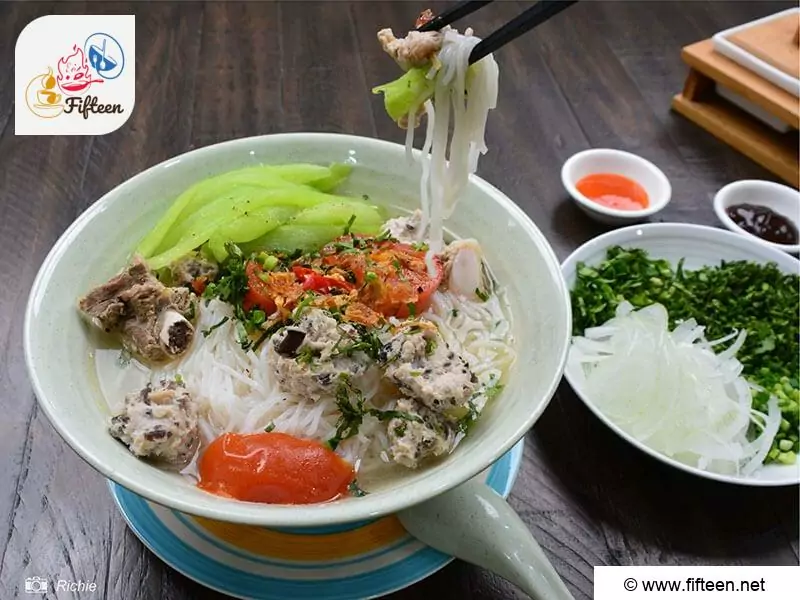
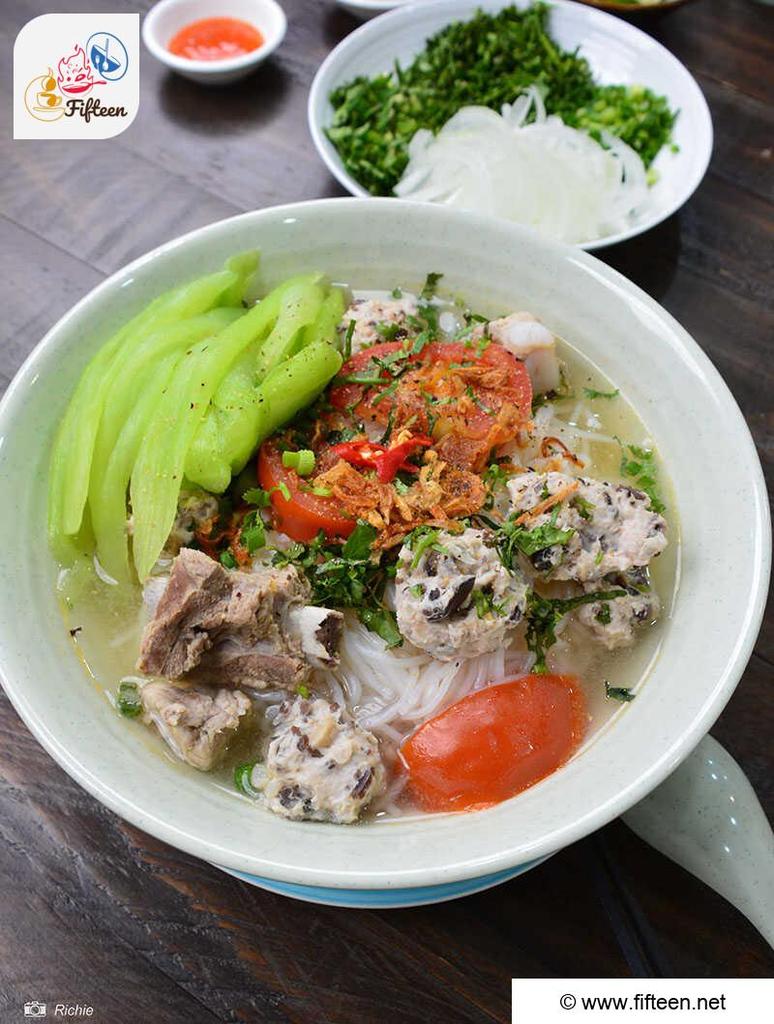
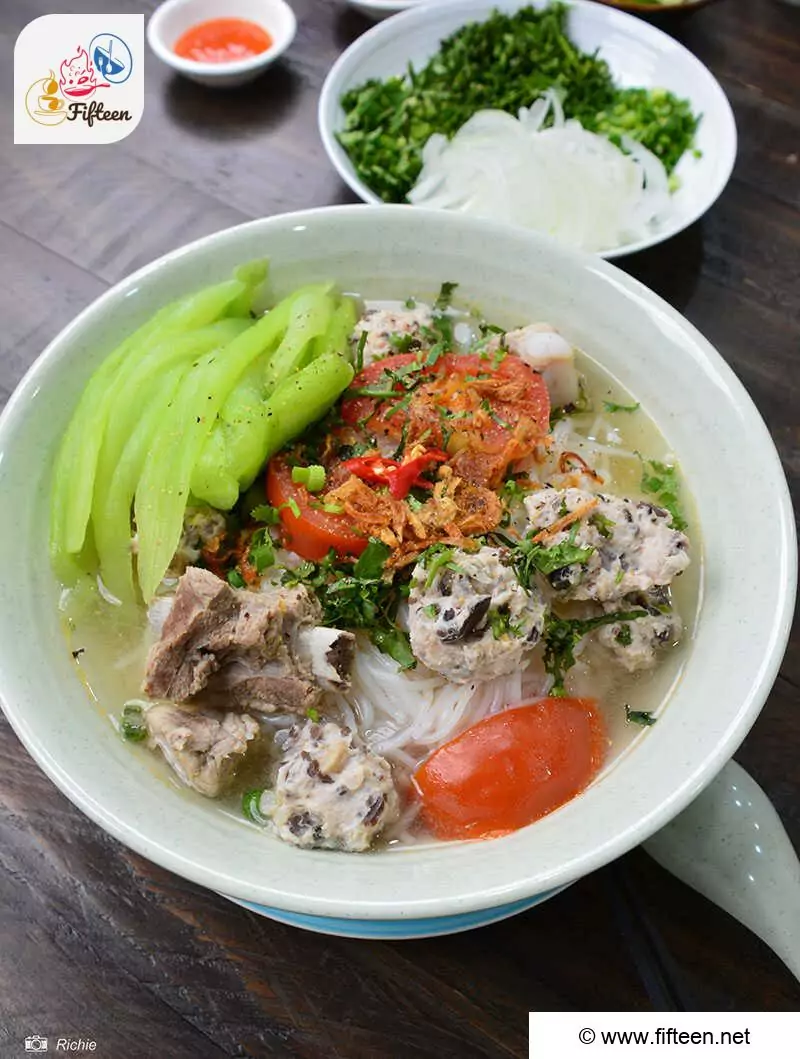
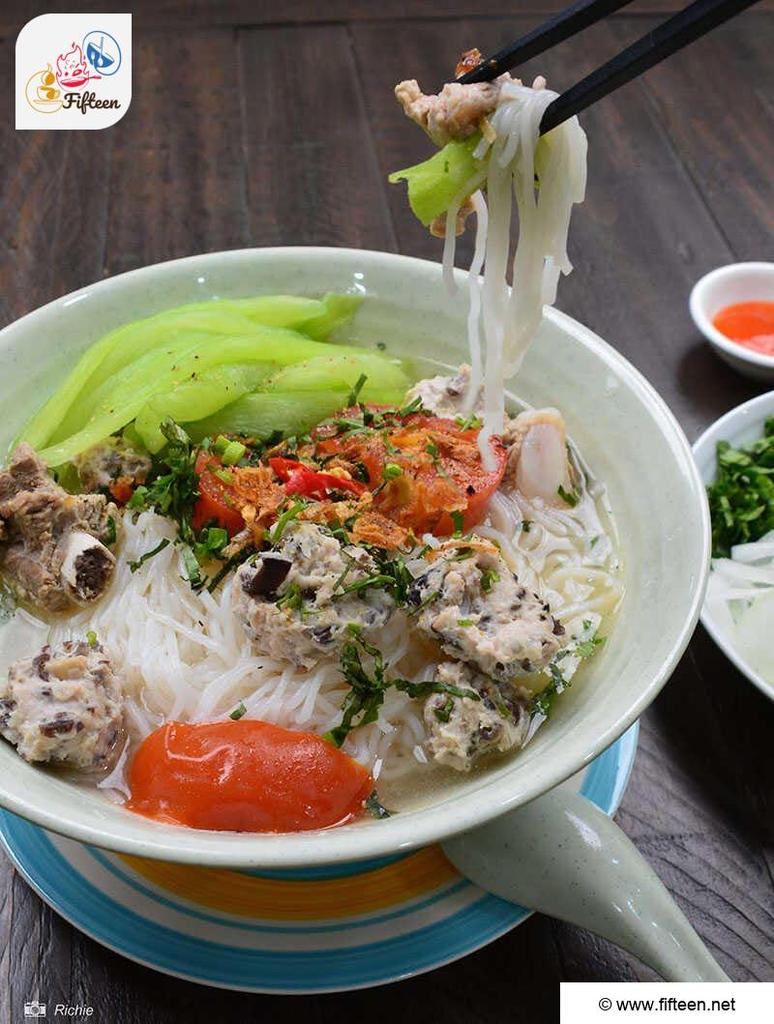
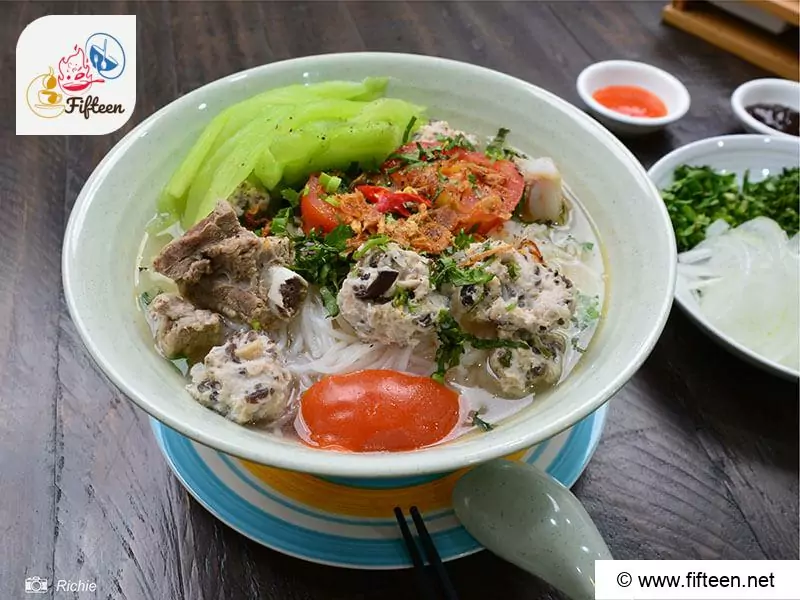
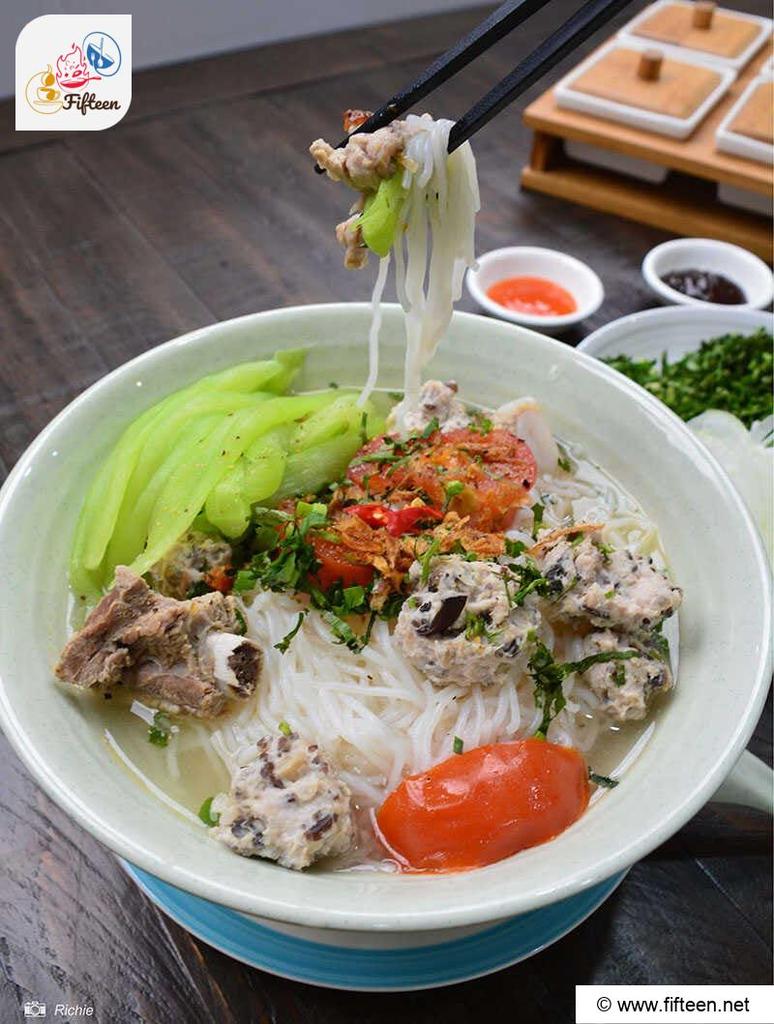
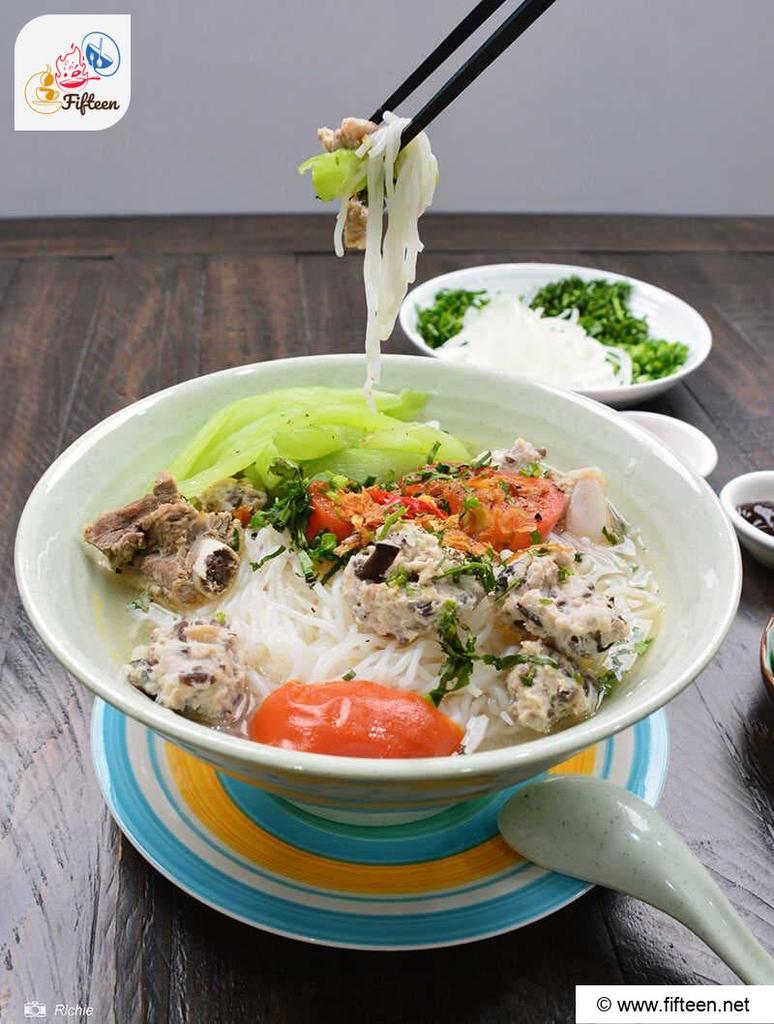
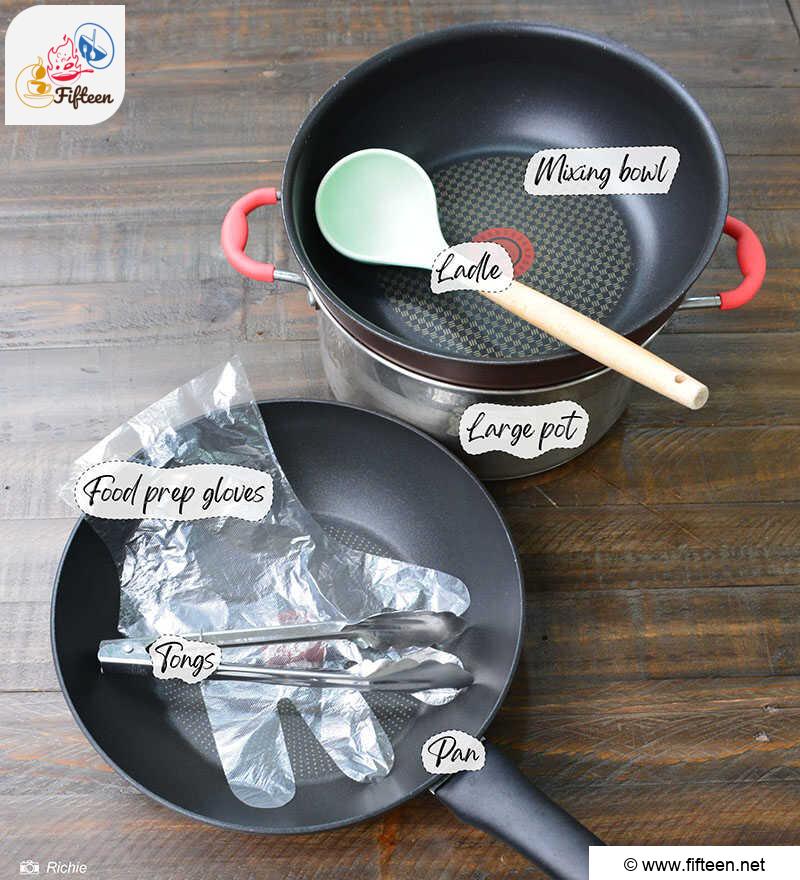
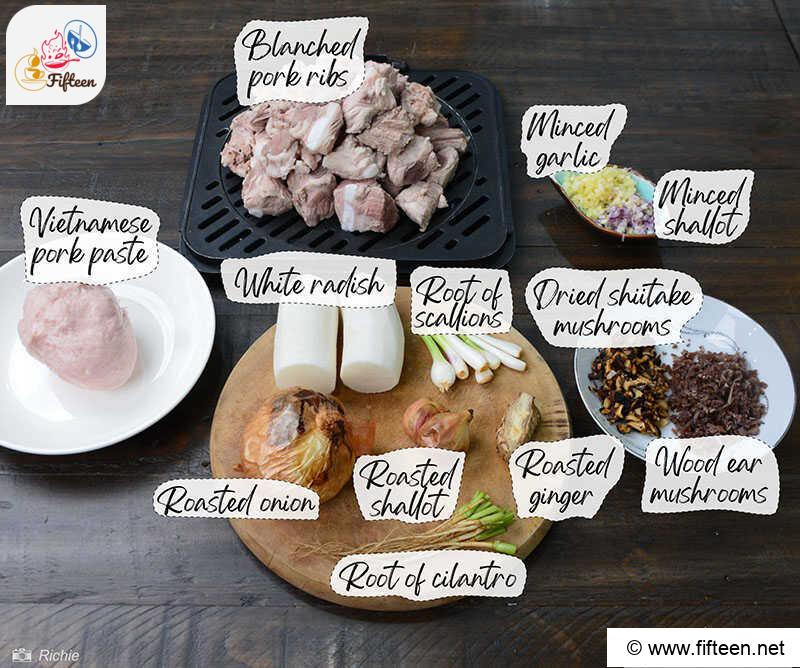
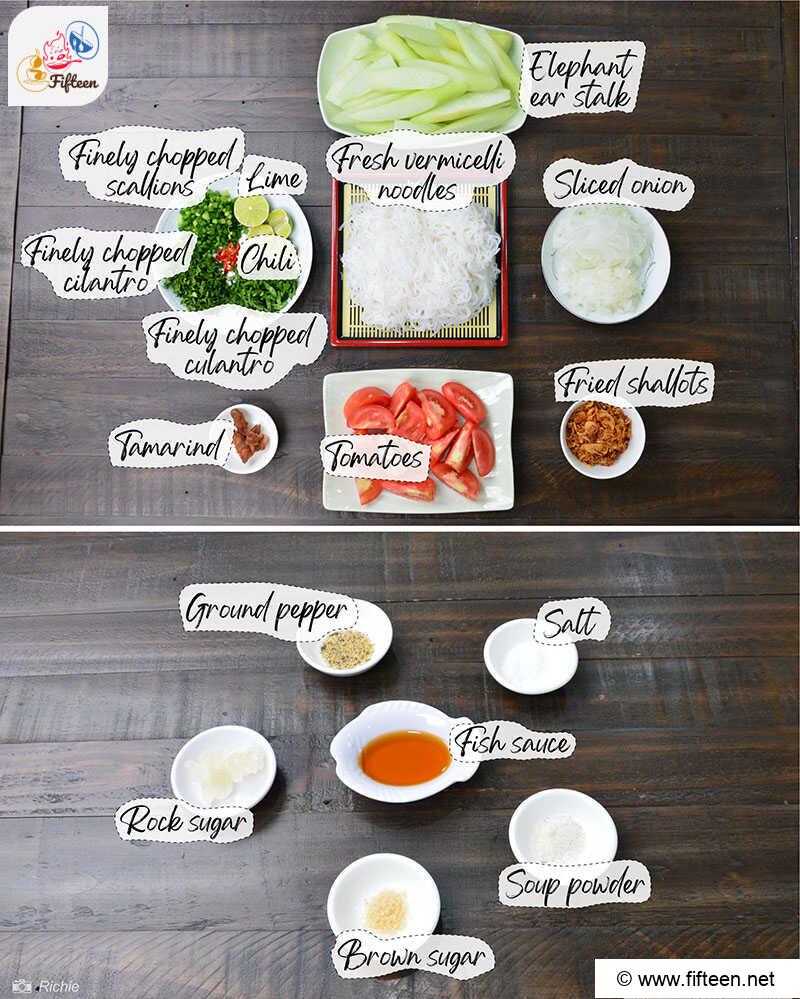
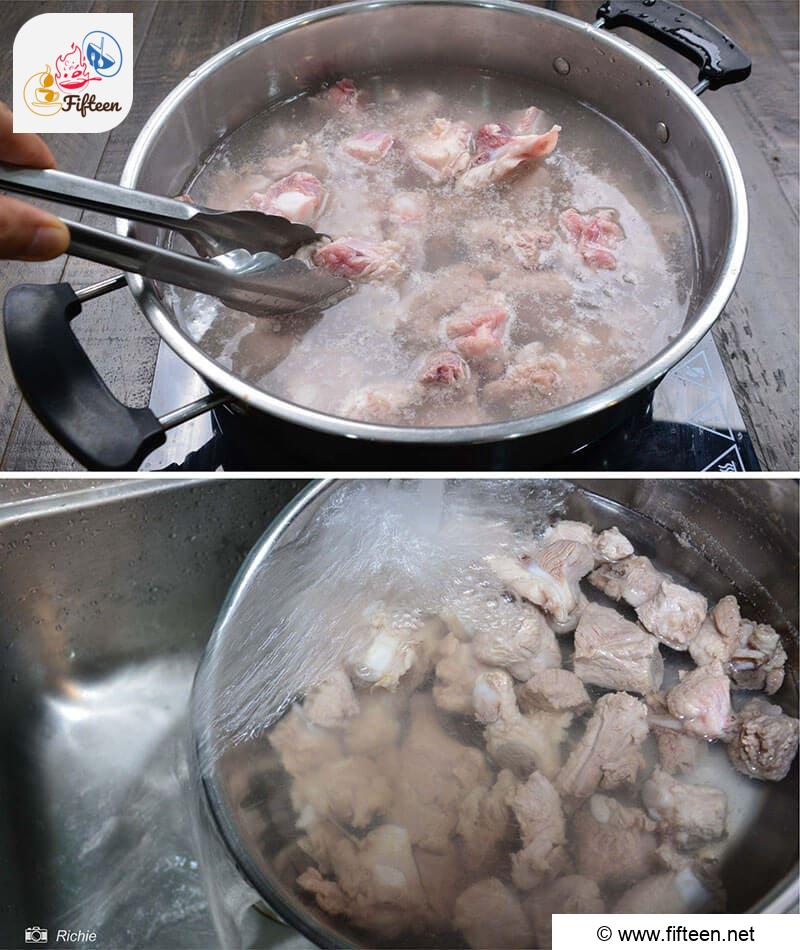
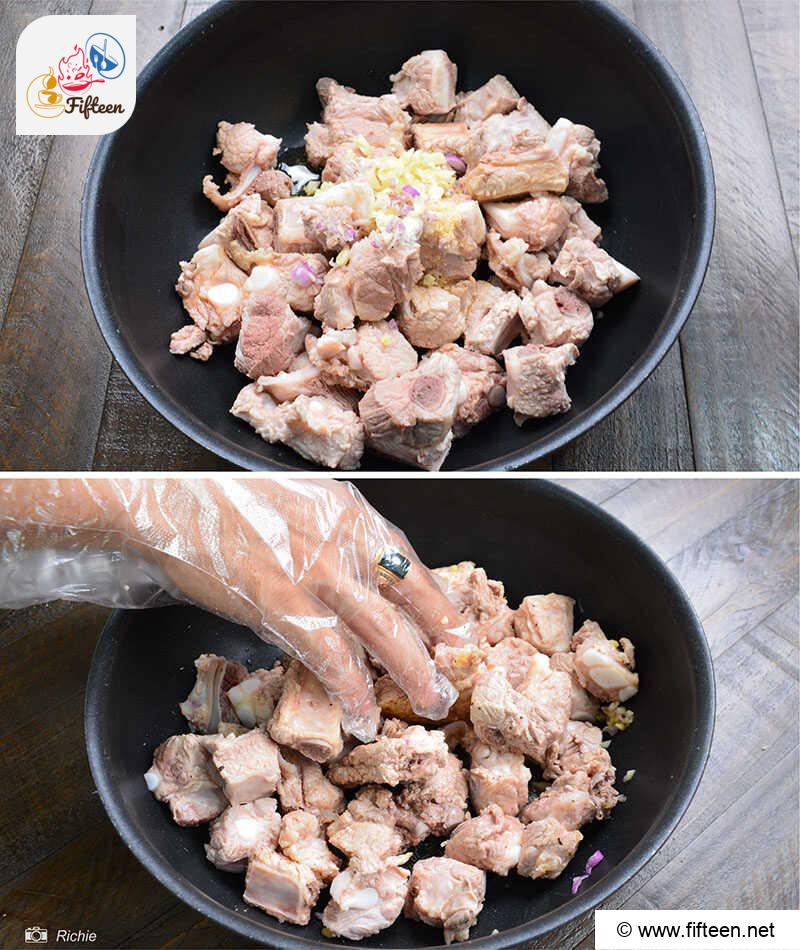
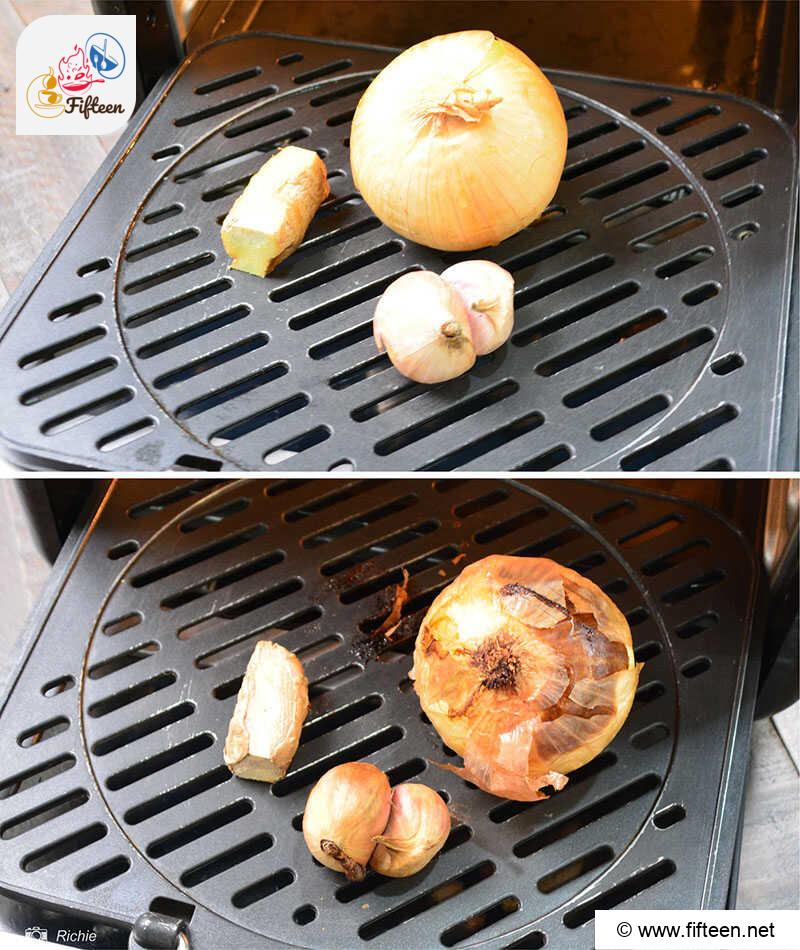
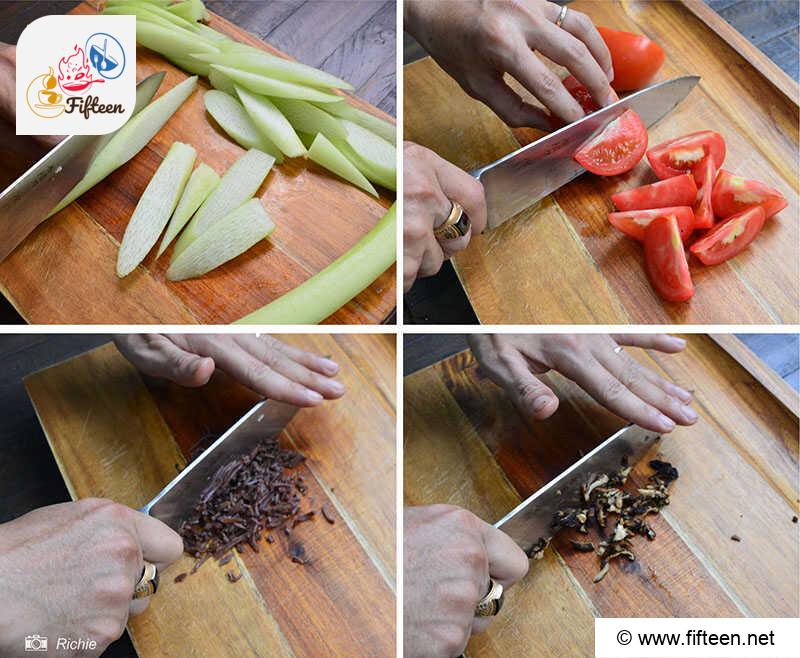
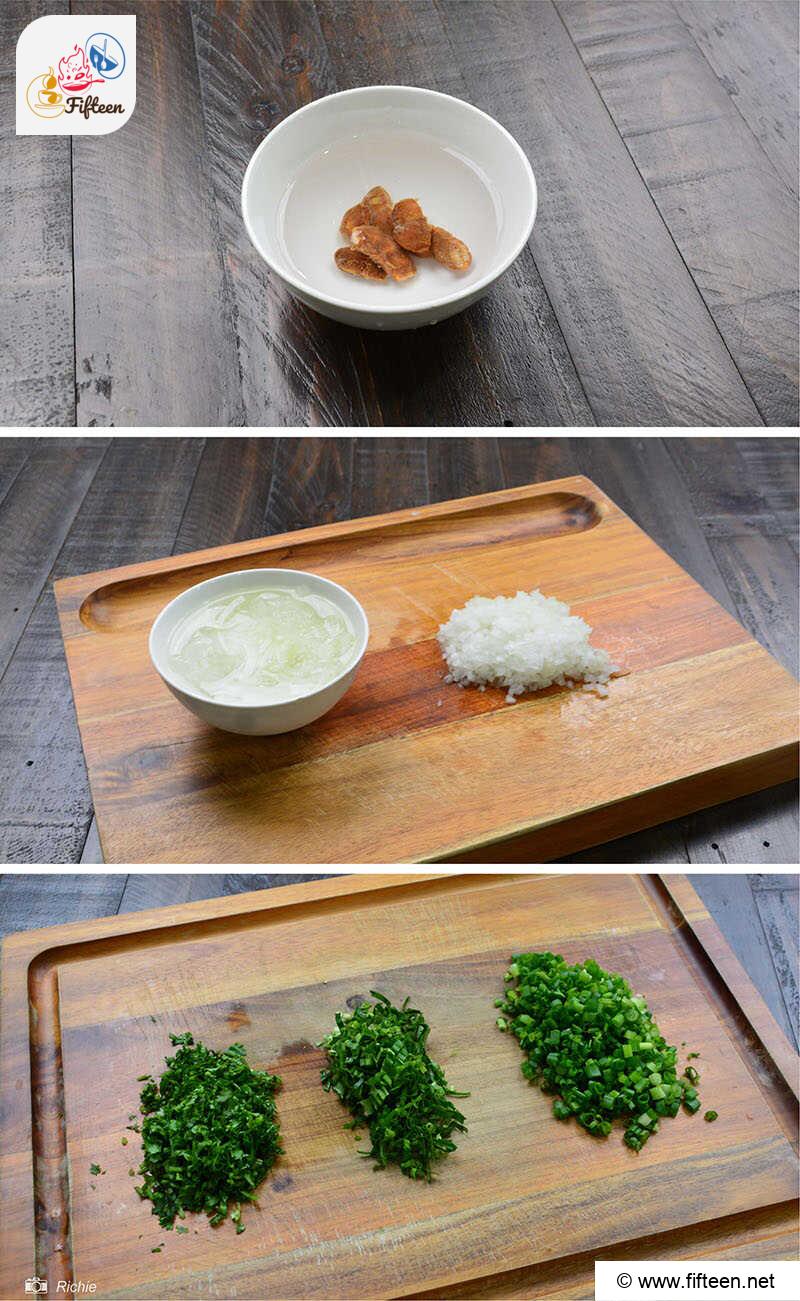
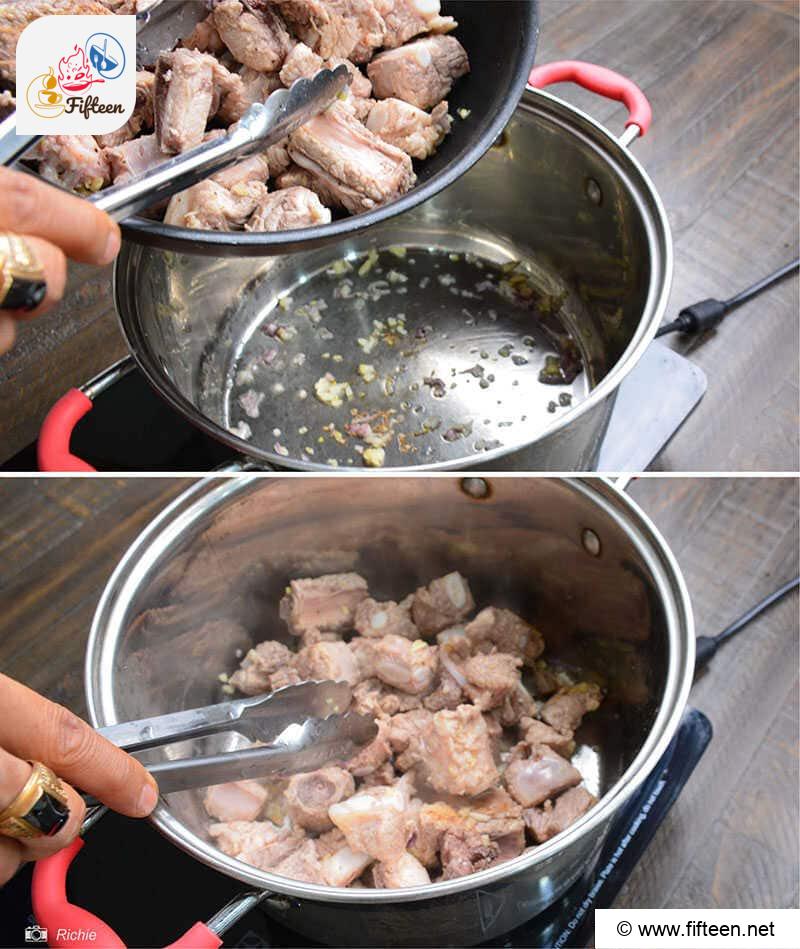
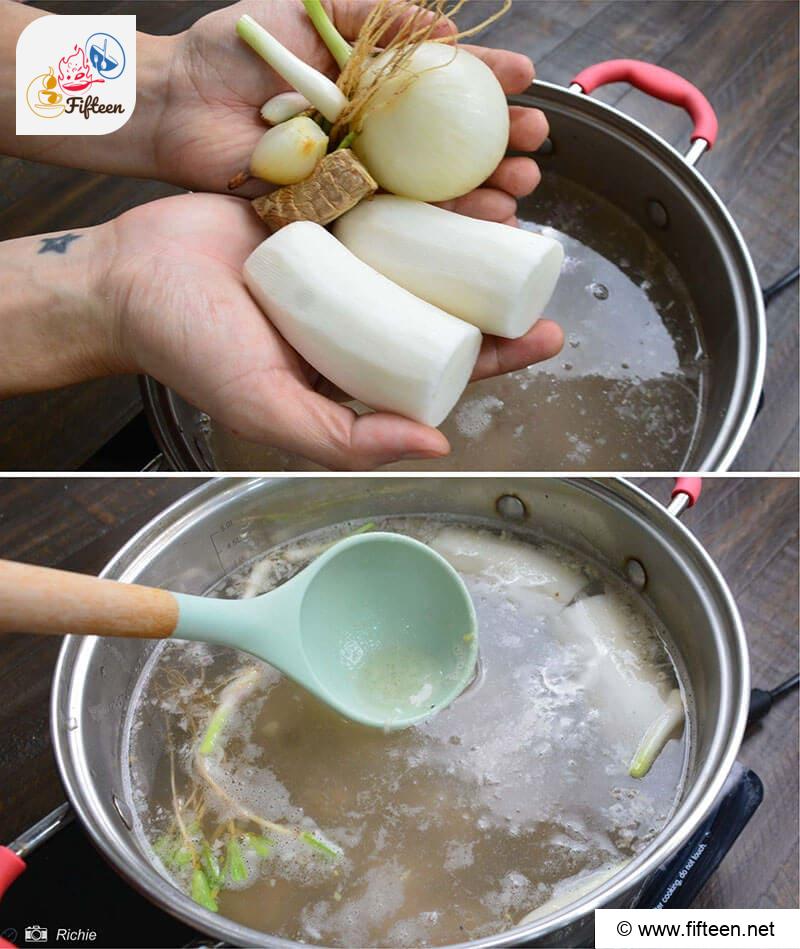
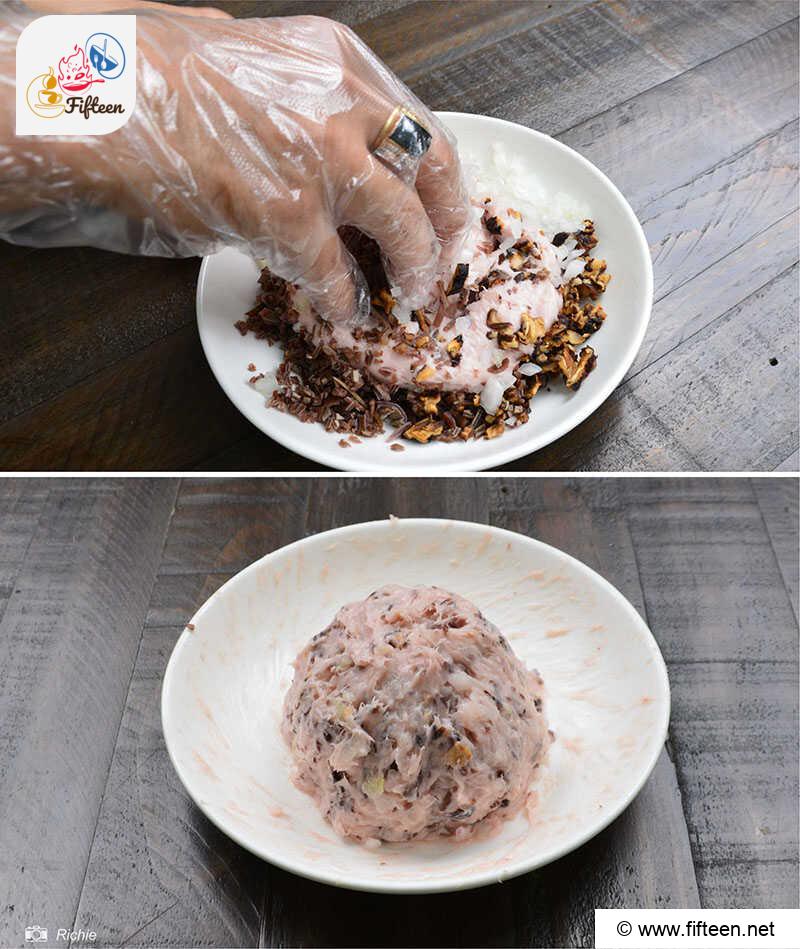
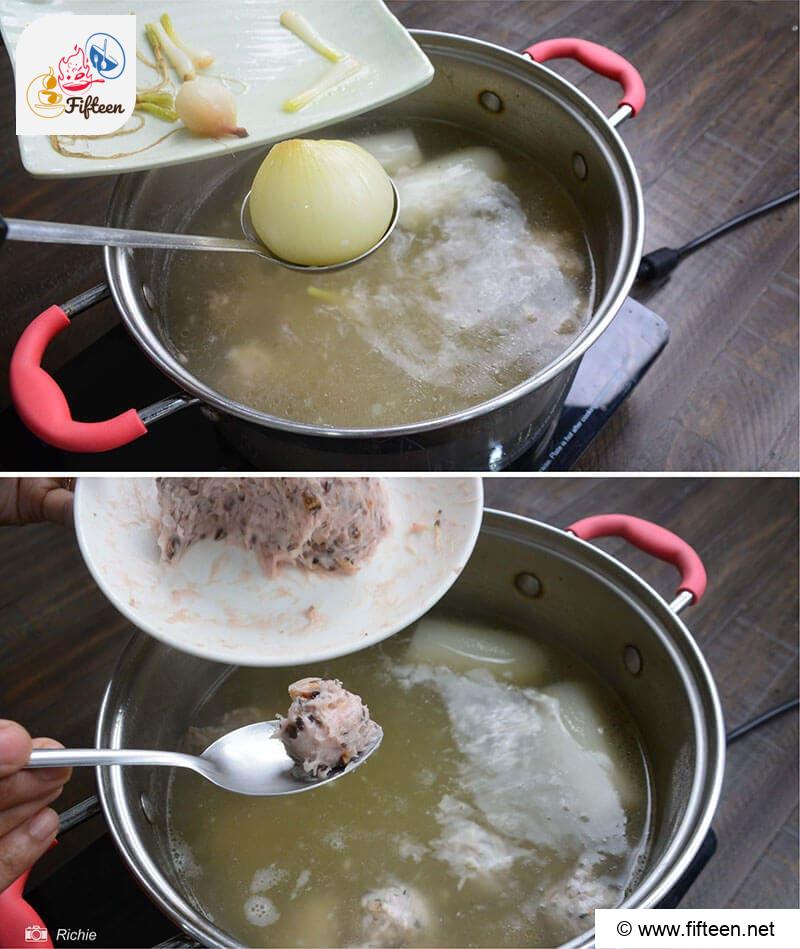
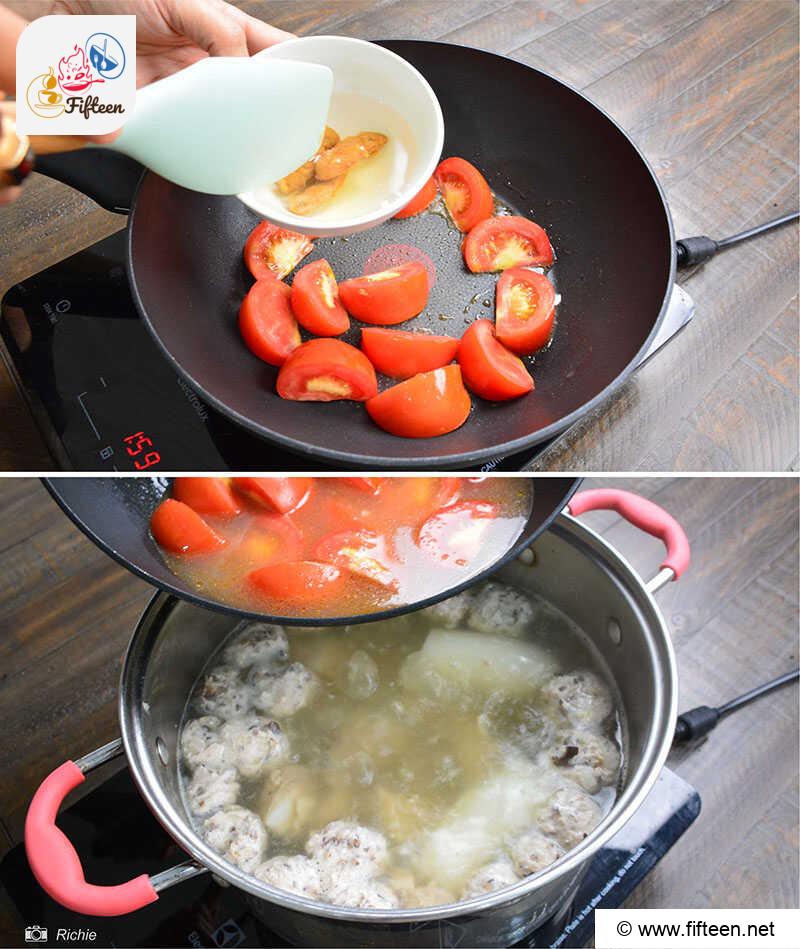
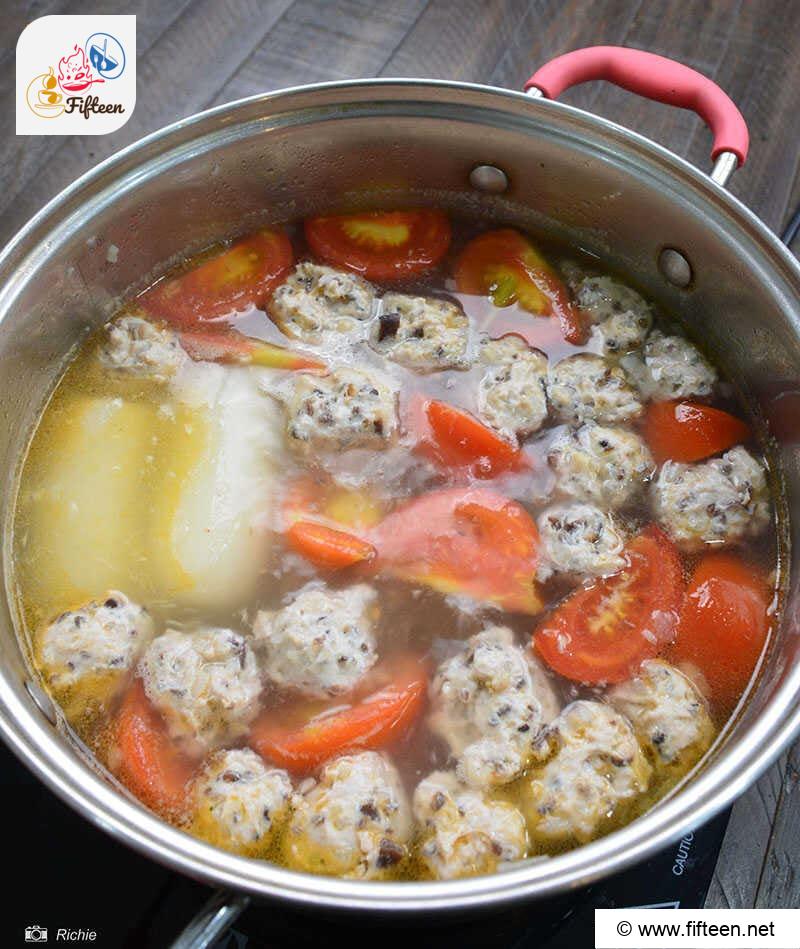
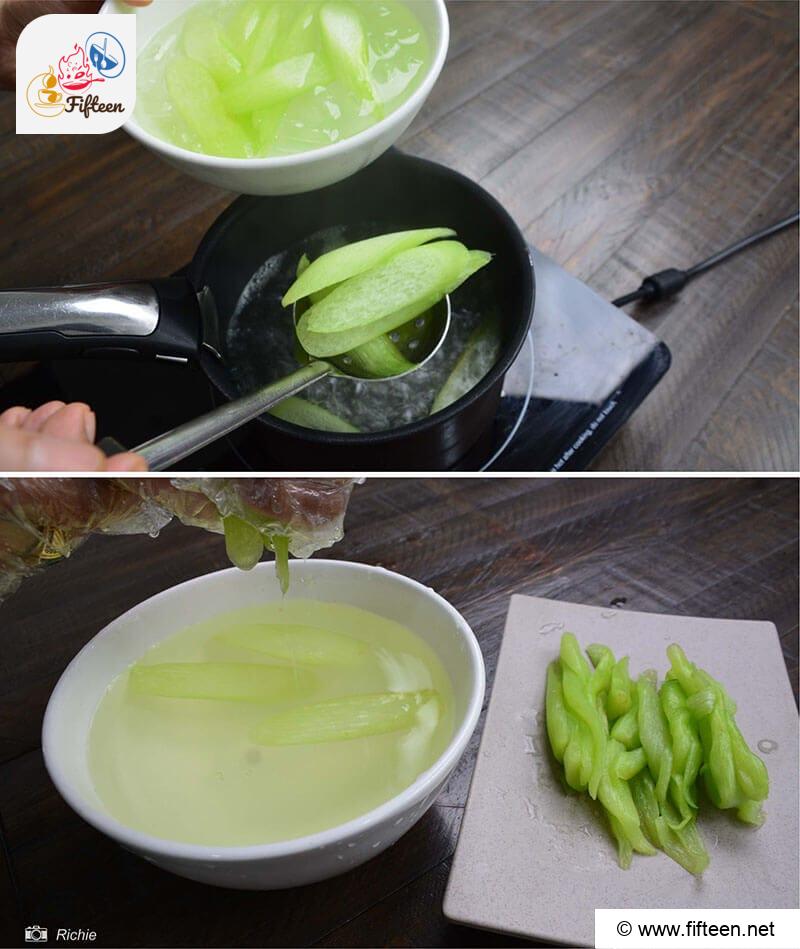
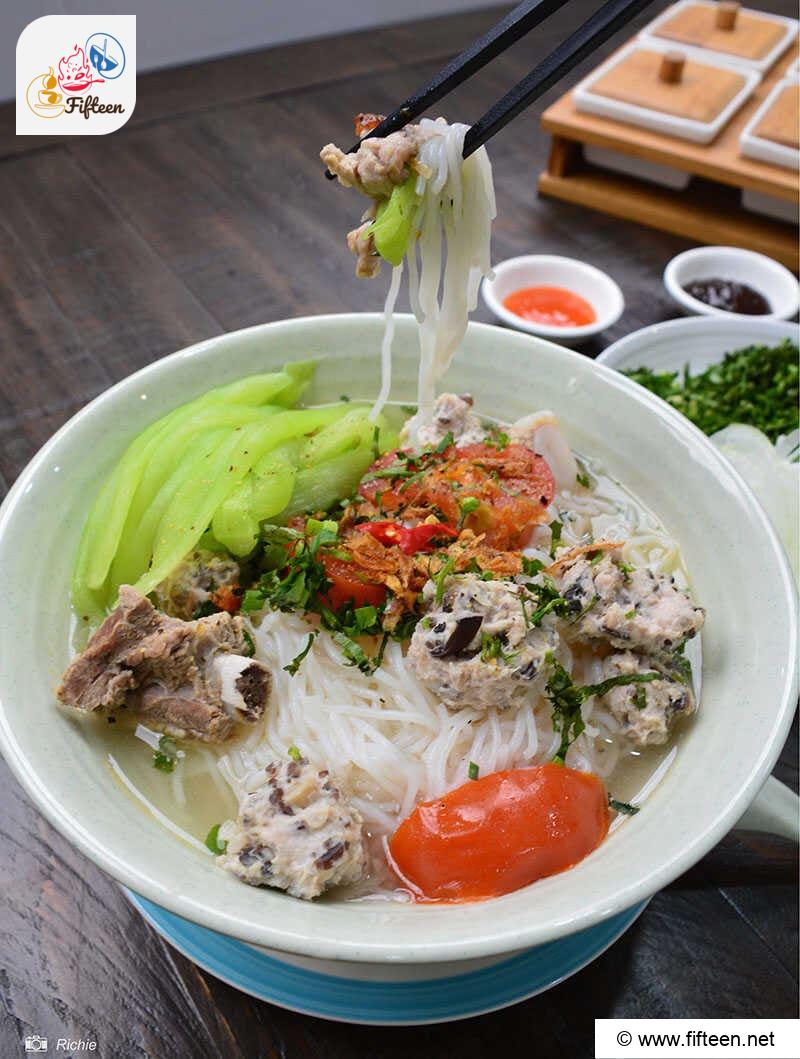
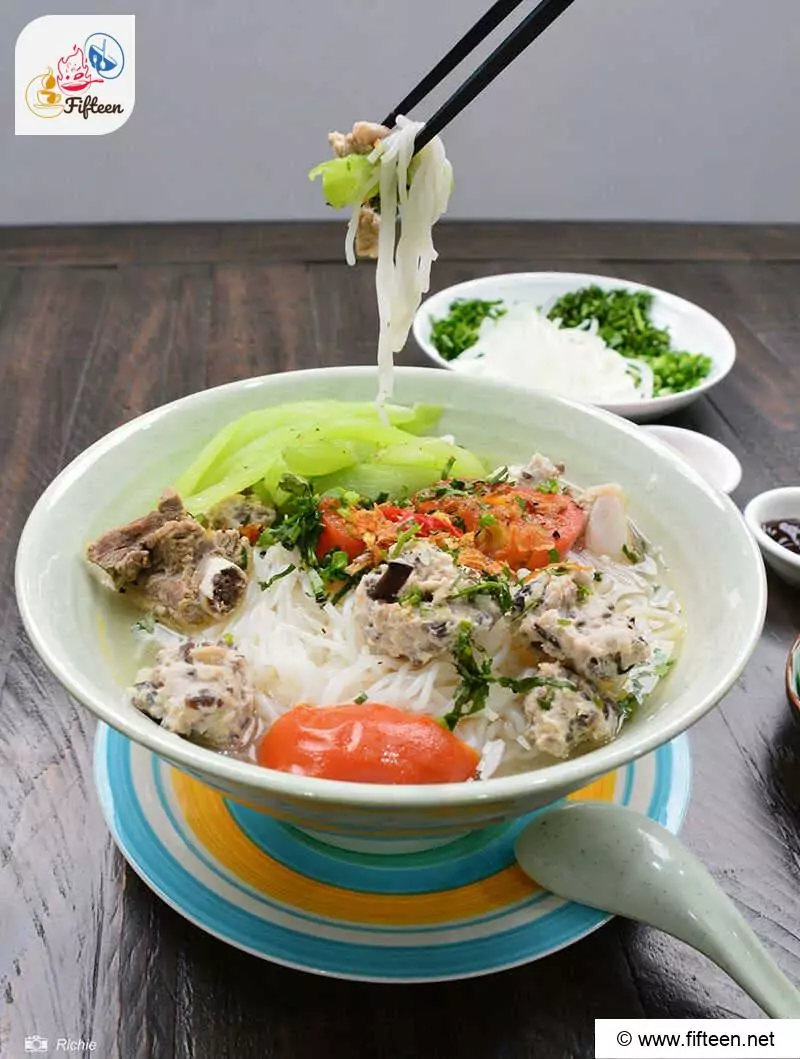
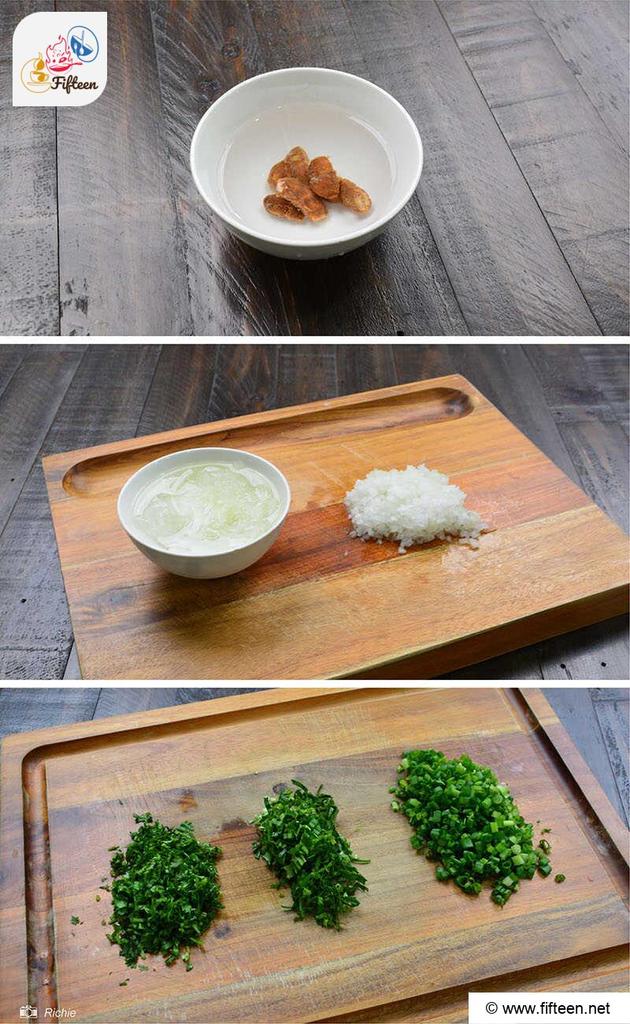
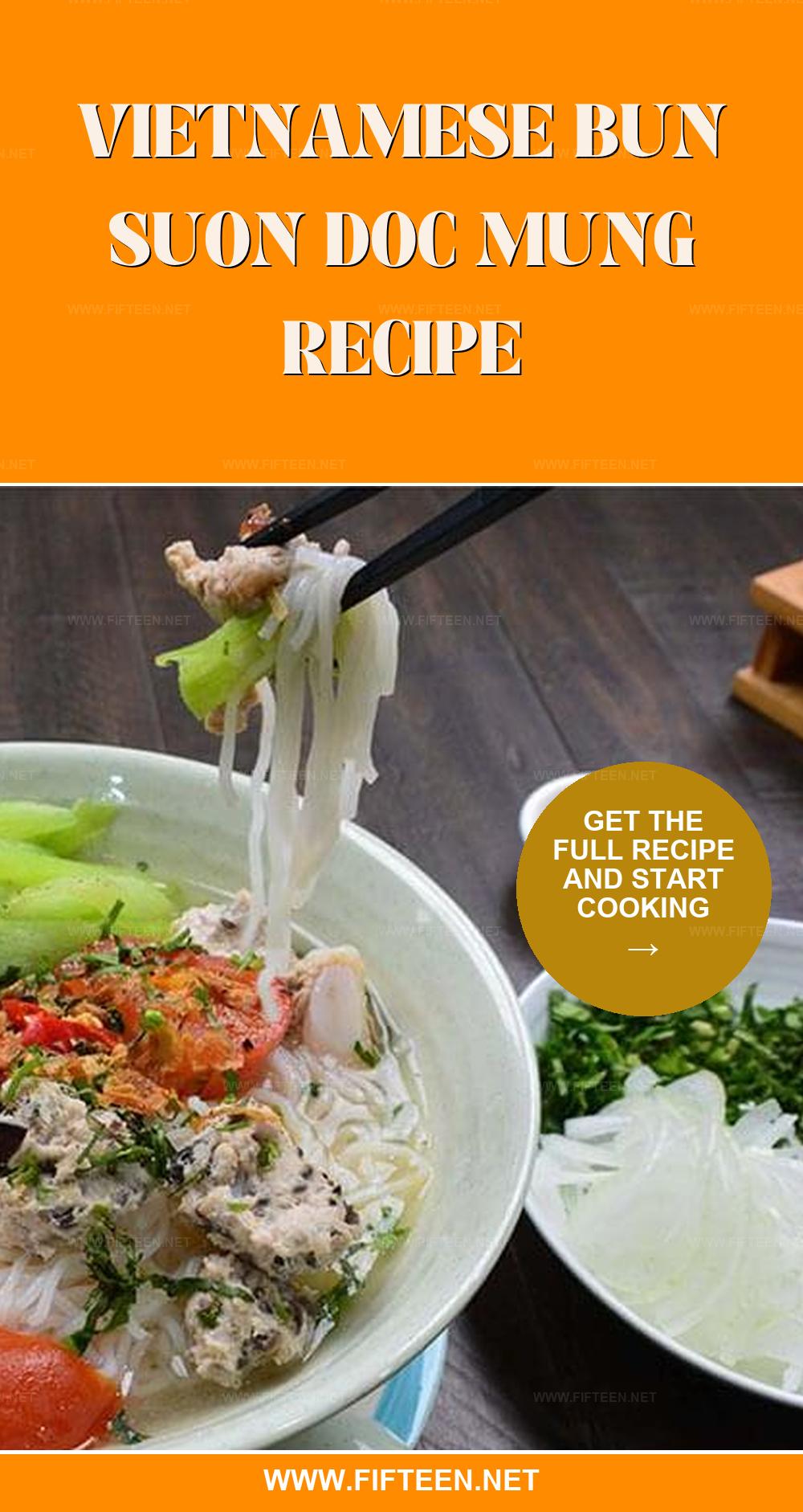
Richie
Content Writer
Expertise
Home Cooking, Meal Planning, Food Styling, Food Photography, Cooking-video Maker, Beverage Evaluation Expert
Education
Saigon Culinary Arts Centre, Ho Chi Minh City, Vietnam
Vietnam Australia Vocational School (VAAC), Hanoi, Vietnam
Richie, based in Ho Chi Minh City, Vietnam, is a dynamic Content Writer with a talent for capturing the essence of culinary art.
Richie specializes in creating visually appealing and tasty content, offering a new angle on Vietnamese and other culinary traditions. With a background in graphic design and a love for food styling and photography, he expertly combines beauty with food narratives, encouraging his audience to discover the culinary world through his imaginative perspective.